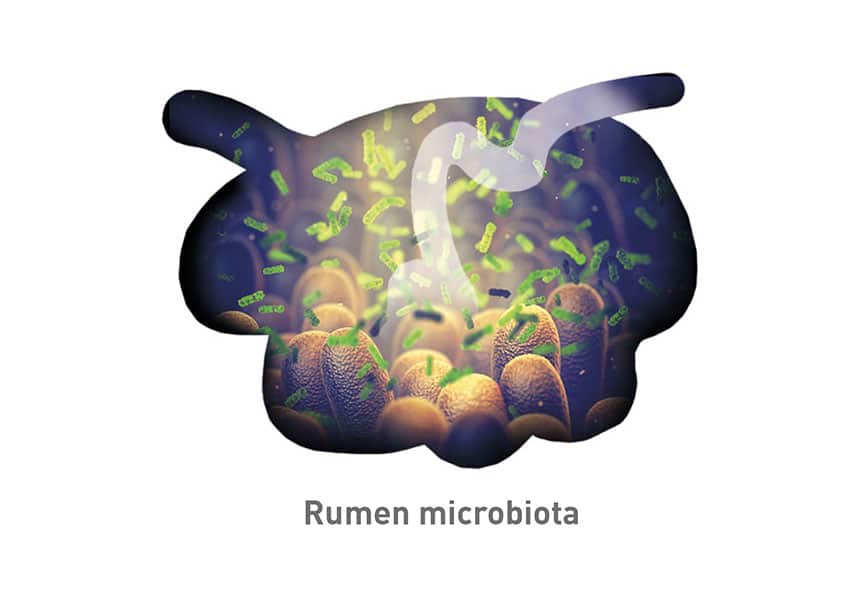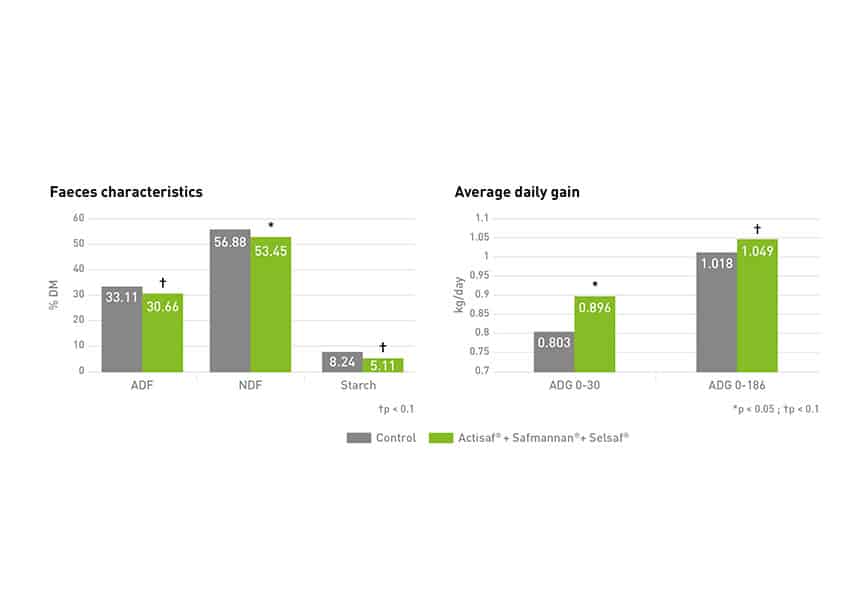Rumen health & feed efficiency
Beef cattle are weaned and raised on pasture until they reach sufficient bodyweight to be moved to a feedlot for finishing. Pre-feedlot, their diet is composed mainly of grass, with little or no concentrates. On arriving at the feedlot, calves need to be transitioned to a high-concentrate diet, a process that requires the adaptation of rumen bacterial populations. It’s considered this change takes a minimum of 14 days; to achieve optimal rumen bacterial balance and avoid ruminal disorders, such as acidosis.
Organic acids are normal metabolites of ruminal fermentation, where rumen bacteria metabolise carbohydrates to organic acids (VFA and lactate). Volatile fatty acids (VFA) are used by the animal as a primary energy source. Because the goal of the feedlot phase is to finish cattle on a high-grain diet, after their previous forage-based regime, a period of transition is required to change the animal’s eating behaviour.

Bacterial changes
Microbes in the rumen of cattle on a forage-based diet are primarily comprised of those most effective at breaking down the fibres in forage. Microbes in the rumen of grain-fed cattle, however, are those which are adept at digesting starch and efficiently metabolising lactic acid. An average period of 4 weeks is required for efficient bacterial transition when moving from fibre to grain, in order to avoid ruminal acidosis.
Behaviour changes
Cattle consuming a forage-based diet eat until their rumens are physically full. Conversely, cattle on a grain-based diet must only consume a limited amount per feed, subsequently allowing time for accumulated acids to be absorbed before the next meal.
Without an adequate transition, allowing ruminal microbes and animal behaviour to change gradually, cattle will have an excessive build-up of acids in the rumen, resulting in either sub-clinical or clinical acidosis. Cattle suffering from acidosis will go off their feed until the acidosis subsides. Animals with sub-clinical acidosis may not exhibit visual signs, but will generally eat less, with reduced feed conversion rates (FCR) and lower bodyweight gain.
Prevention of ruminal acidosis
Supplementing yeast probiotic Actisaf® supports rumen bacterial adaptation to high-energy diets, reducing the risk of ruminal acidosis. Actisaf® supplementation improves FCR and daily weight gain during the adaptation phase. The carry-over effect is observed throughout finishing.
Data from 1036 feedlot cattle, supplemented with 5g Actisaf®, 10g Safmannan® per animal per day, and 0.2mg Se/kg of DMI of Selsaf® for 30 days during the receiving period , shows the ability of Actisaf® to improve rumen conditions and support rumen bacteria fermentation. The end result is better feed efficiency and higher weight gain, not only during the receiving period, but throughout the whole finishing period.














